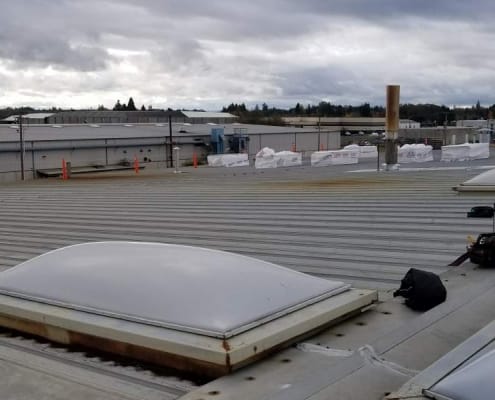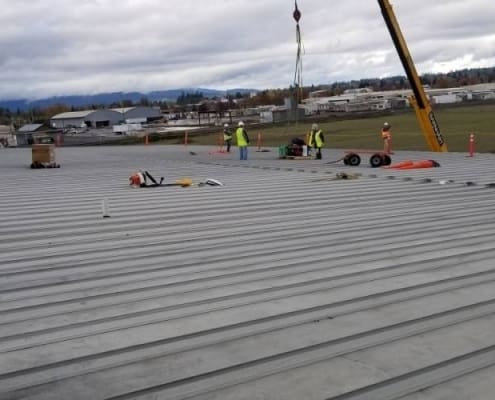Commercial Roof Materials
Century Construction can help determining which commercial roof material is best for your business? Contact Century Construction today for a FREE consultation about the commercial roof materials that best fit your needs and to obtain a quote for your commercial roofing project!
Commercial Roof Materials
If you are about to build a new commercial building or replace the roof on an existing business, the choice of commercial roof materials can be a bit overwhelming. Here is summary of the most common commercial roof materials and systems to consider.
Thermoplastic Commercial Roof Materials
Thermoplastic commercial roofs are generally made from one of two types of materials: TPO (thermoplastic polyolefin) and PVC (poly vinyl chloride). They are lightweight roofing systems that include a highly reflective membrane. As a result the materials used to produce a thermoplastic commercial roof provide excellent weathering and are highly resistant to ultraviolet light, tears, punctures, and most chemicals. Thermoplastic roofs have typical lifespans of more than 20 years.
EPDM Commercial Roof Materials
EPDM commercial roofs are made from Ethylene Propylene Diene Terpolymer, one of the most sustainable and environmentally sound roofing materials available. EPDM is a single-ply rubber roofing material that is resistant to ozone, ultraviolet light, weathering, and abrasion damage. It is considered an excellent roofing material for commercial applications due to us tolerance to extreme weather conditions like high winds and hail.
Modified Bitumem Commercial Roof Materials
Modified Bitumen commercial roofing systems are made from a wide range of materials. This commercial roofing system is made from an asphalt base that is reinforced with wither polyester or fiberglass. These materials make modified bitumen roofs excellent for commercial applications that require resistance to foot traffic, punctures and tears. Modified bitumen commercial roofs are a blend of old and new roofing technologies and use two different materials, APP (Atactic Polypropylene polymer) and SBS (Styrene Butadiene Styrene), to give the membrane elasticity and temperature resistance.
Built-Up Commercial Roof Materials
Built up commercial roofs are made of multiple layers of felt, fabric, or mat materials that are laminated together with either asphalt or coal tar pitch. The commercial roof is finished with a layer of gravel, a material that provides a weather resistant coating. The result is a commercial roof that is made of materials that when combined are highly resistant to punctures and harsh weather conditions.
Metal Commercial Roof Materials
Metal commercial roofs are comprised of metallic roofing materials, such as R-panels, or corrugated metal panels, are mechanically fastened together. The materials used for commercial roofs provide architects and business owners with a vast array of choices from the type of metal used to color options. Commercial metal roofs are made with materials that are prized for their strength, durability and fire resistance. Due to their longevity, they are often the top choice for sustainable building projects.
Commercial Photovoltaic Solar Roof Materials
The popularity of commercial photovoltaic roofs are continuing to rise as material costs for photovoltaic systems become more affordable. Many business owners turn to commercial photovoltaic roofs as a means to save energy costs and take advantage of the public relations benefits associated with sustainable building trends.
Commercial Green Roof Materials
Commercial green roofs have become increasingly popular in recent years and are produced with a range of materials that include vegetation and soil planted over a waterproof membrane. Commercial green roof materials reduce the urban heat island effect by soaking up heat from the environment and dramatically improving the insulation value of a roof, which reduces the heating and cooling costs of the commercial building.




